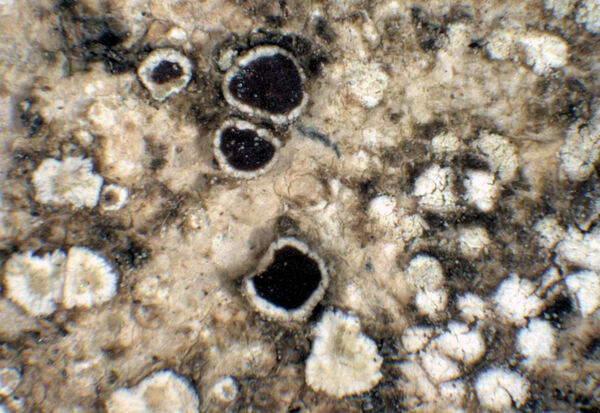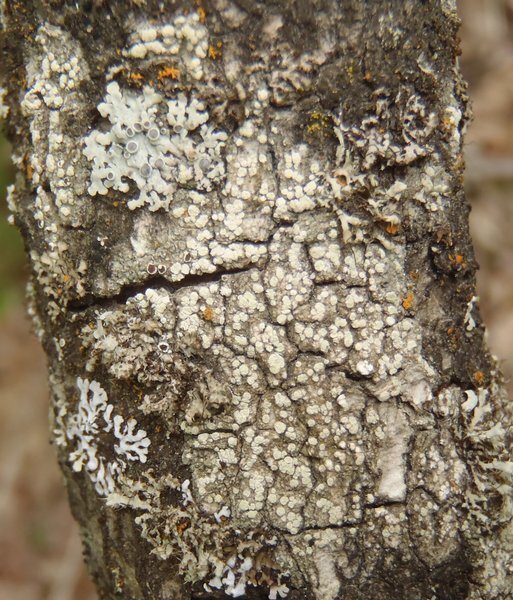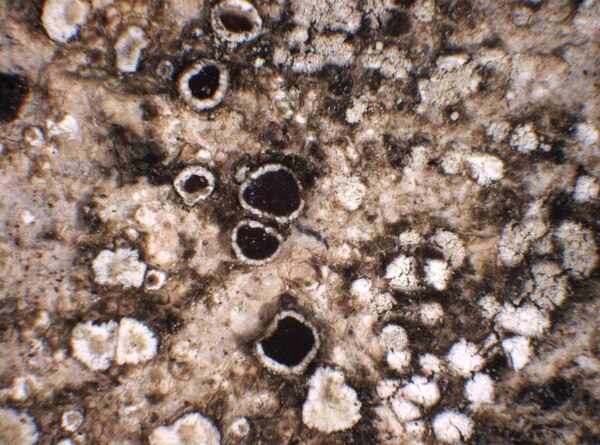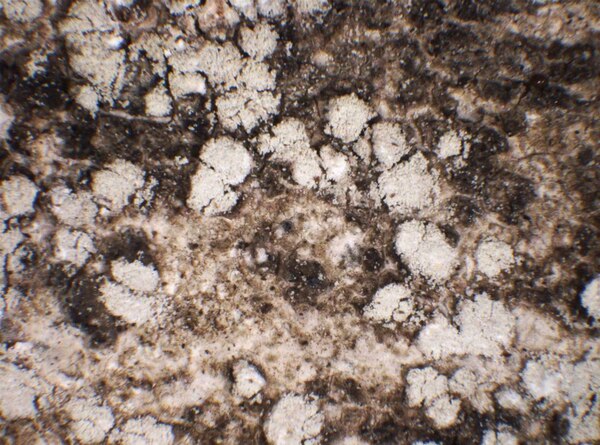Lecanora allophana f. sorediata Vain.
Meddeland. Soc. Fauna Fl. Fenn., 3: 103, 1878.
Synonyms:
Distribution: N - Frl, Emil (Fariselli & al. 2020). C - Marc (Nimis & Tretiach 1999).
Description: Thallus crustose, smooth to verrucose, rather thick, usually white, sorediate, the soralia strongly convex, hemispherical, usually discrete, white, greyish white or yellowish white, with finely granulose soredia. Apothecia lecanorine, often occurring together with the soralia, (0.6-)1-2.5(-3) mm across, strongly constricted at base, with a reddish brown to orange-brown, usually glossy, concave to finally slightly convex disc, and a thick, raised, often flexuose and crenulate thalline margin. Thalline exciple indistinctly corticate, 30-40 µm thick laterally, 50-75(-90) µm thick at base, the superficial layer not sharply delimited from the medullary part, which is filled with with abundant, small crystals insoluble in K (the crystals reaching the cortex); epithecium orange to orange-brown, the pigment not dissolving in K, without crystals; hymenium colourless, not inspersed with oil droplets; paraphyses slightly thickened at tips to capitate; hypothecium colourless, not inspersed with oil droplets. Asci 8-spored, clavate, very thin-walled, with a K/I+ blue, tall tholus penetrated by a faintly amyloid apical cushion, the wall K/I-, surrounded by a blue outer layer, Lecanora-type. Ascospores 1-celled, hyaline, ellipsoid, (10-)13-19(-21) x (6-)7-10(-11) µm, the wall >1 µm thick. Photobiont chlorococcoid. Spot tests: thallus K+ yellow, C-, KC-, P- or P+ pale yellow. Chemistry: atranorin (major) and unknown terpenoids.
Note: this taxon was sometimes considered as a synonym of L. impudens. According to Lendemer & al. (2013) the two taxa, although similar in general appearance, have a different chemistry; in my opinion, ths is just a sorediate form of L. allophana. This morph is included in the Italian red list of epiphytic lichens as “Data Deficient” (Nascimbene & al. 2013c).
Growth form: Crustose
Substrata: bark
Photobiont: green algae other than Trentepohlia
Reproductive strategy: mainly asexual, by soredia, or soredia-like structures (e.g. blastidia)
Commonnes-rarity: (info)
Alpine belt: absent
Subalpine belt: absent
Oromediterranean belt: absent
Montane belt: very rare
Submediterranean belt: very rare
Padanian area: absent
Humid submediterranean belt: absent
Humid mediterranean belt: absent
Dry mediterranean belt: absent
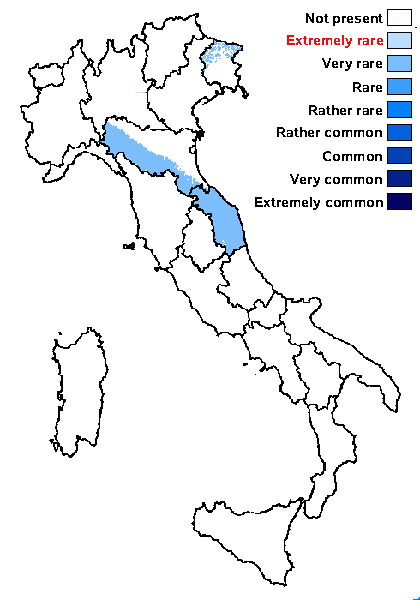
Predictive model
Herbarium samples
Growth form: Crustose
Substrata: bark
Photobiont: green algae other than Trentepohlia
Reproductive strategy: mainly asexual, by soredia, or soredia-like structures (e.g. blastidia)
Commonnes-rarity: (info)
Alpine belt: absent
Subalpine belt: absent
Oromediterranean belt: absent
Montane belt: very rare
Submediterranean belt: very rare
Padanian area: absent
Humid submediterranean belt: absent
Humid mediterranean belt: absent
Dry mediterranean belt: absent

Predictive model
| Herbarium samples |
 Index Fungorum
Index Fungorum
 GBIF
GBIF
